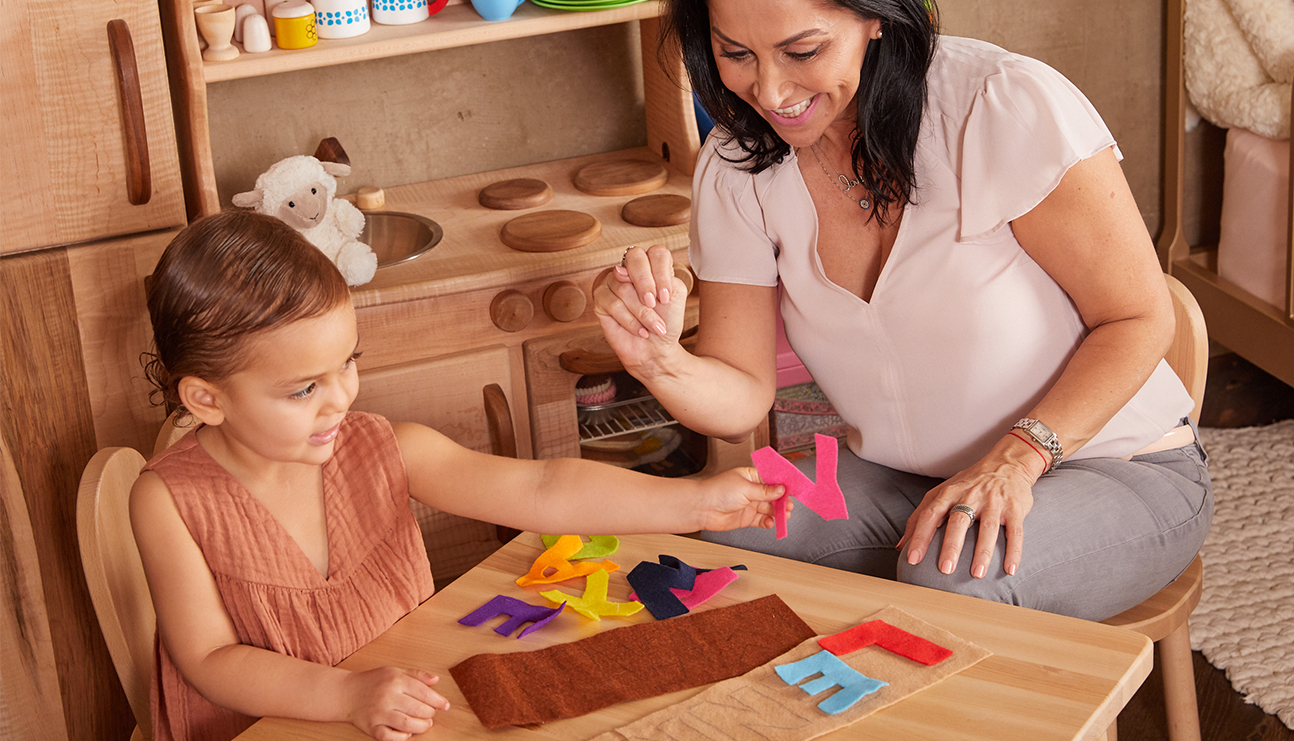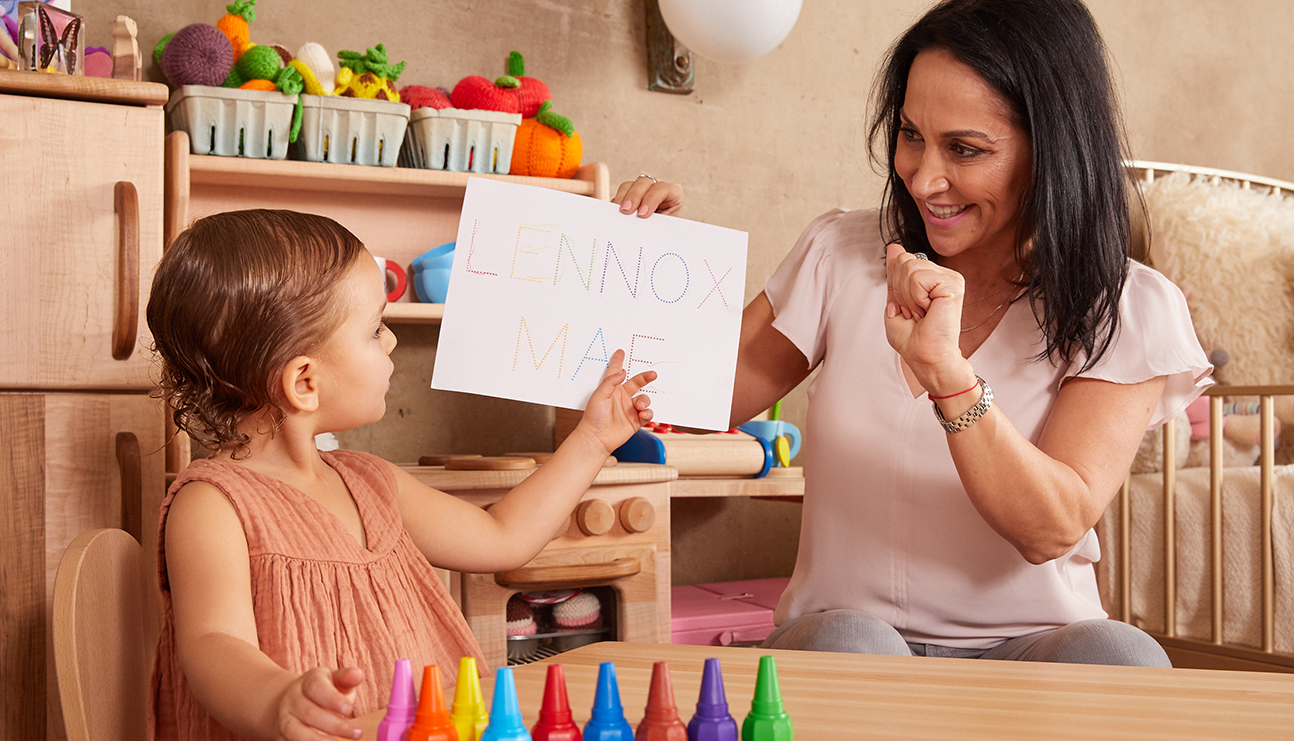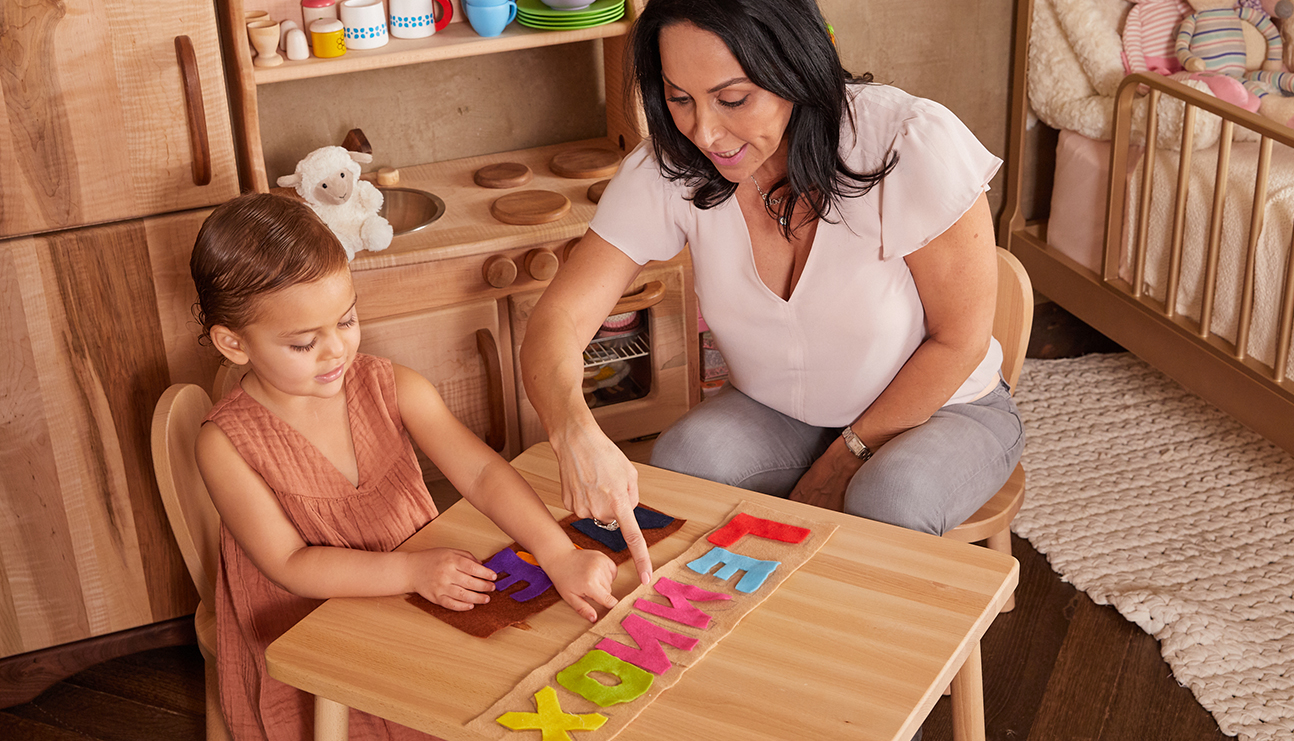Sign Language Series, Part Two: Emotional Intelligence and Literacy Skills
Denise Vasi
Most parents will dismiss sign language once a child starts speaking, but the truth is that the benefits of teaching your child sign language don’t stop once your child can say “mama” or “milk.” In fact, using sign language with toddlers and preschoolers is even more beneficial. While initial use will teach your infants how to communicate their wants and needs, signing with toddlers will help them communicate complex subjects like their feelings, directions and the concept of similarities and differences. Sign language with your toddler will also improve their vocabulary, which will in turn encourage your child to be an early reader.
Feelings
For a toddler, emotions can be blurry. Even when your toddler has words, emotional messages can still get crossed. Tired is a very different feeling from frustration and the solutions differ as well. Sign language gives a child the ability to identify, differentiate and validate their own feelings, leading to self-awareness and self-esteem.
“When a child can tell you what they are feeling and take pride in it, ‘I feel excited and I feel sad and I feel angry,’ that is raising their self-esteem,” says Etel Leit, MS founder of SignShine, a parenting center based on American Sign Language. “It’s [telling them it’s] okay to feel it. [They] can sign it and [they] can recognize it.”
Leit believes that communicating feelings is one of the greatest benefits when working with a toddler. It gives them an opportunity to effectively express their true feelings and that creates security.
In the past 3 years working with Leit, I think the most important “feeling” signs we’ve worked on have been “help” and “hurt.” From very early on, my daughter has been able to request help. Not only has signing “help” eliminated frustrating moments for her, but it has also eliminated potential dangerous accidents.
“Hurt” is probably the toughest sign to see as a parent but after Leit taught another family this very important sign, their child was able to communicate that he had pain in his leg. That led to seeing a doctor and eventually to discovering a problem that could have gone unnoticed for another few years. This is just one example of the tangible benefits that come from communicating emotions through sign language.

Literacy Skills
Signing with toddlers encourages them to develop pre-literacy skills by improving their vocabulary as well as their spelling proficiency. It is a great tool to make letter connections as many signs utilize the first letter of the actual spelled word. For example, “water” is signed with a “W,” “blue” with a “B” and “toilet” with a “T.”
By the time my daughter had turned one, she could read most of the alphabet as I signed each letter. I would sign in no particular order and even though she had not yet learned the ever-popular “ABC song,” she could easily identify a “P” from a “Q.”
“When a child learns sign language, we expose the child to letters before they even learn their ABC’s,” says Leit.
In 2000, a study funded by The National Institutes of Child Health and Human Development found that children who learned sign language in conjunction with their spoken language spoke sooner and had a larger vocabulary. 2-year-olds who used sign language knew on average, 50 more spoken words than their non-signing peers. By 3 years old, children who sign have language skills of a 4-year-old.
“Reading first starts with recognizes words and then decoding them,” says Leit, utilizing colors to encourage early connections to the alphabet.
A strong vocabulary is vital for a child to understand what they are actually reading. The larger your child’s vocabulary is, the more connections they can make. There’s a better understanding of concepts and naturally, there is a higher success rate in reading comprehension.
With benefits that carry on far past the toddler years, sign language truly is not simply a tool for those with infants. If you’ve ever wondered about implementing it into your toddler’s life, I encourage you to pursue it. It really never is too late to start.
If you haven’t read part one of this series click here.
Etel Leit, MS is the founder of SignShine, a parenting center based in LA that offers communication consultations, classes and workshops based on American Sign Language (ASL).
If you’re interested in baby signing, you can take SignShine Online Video Lessons from anywhere in the world or download the SignShine app which has favorite children’s songs and rhymes with signs.
*Editor’s Note: this post was originally published in December 2018 and has been revamped and updated for accuracy and comprehensiveness.








